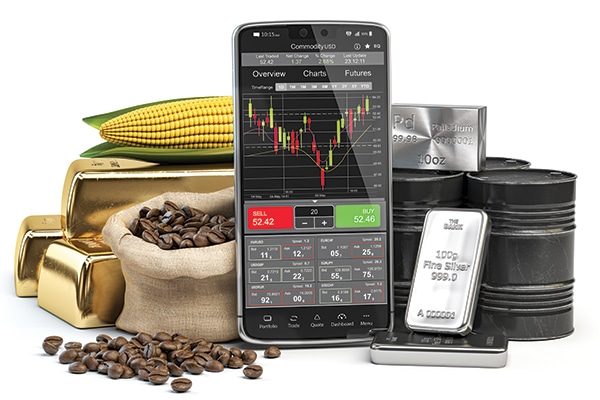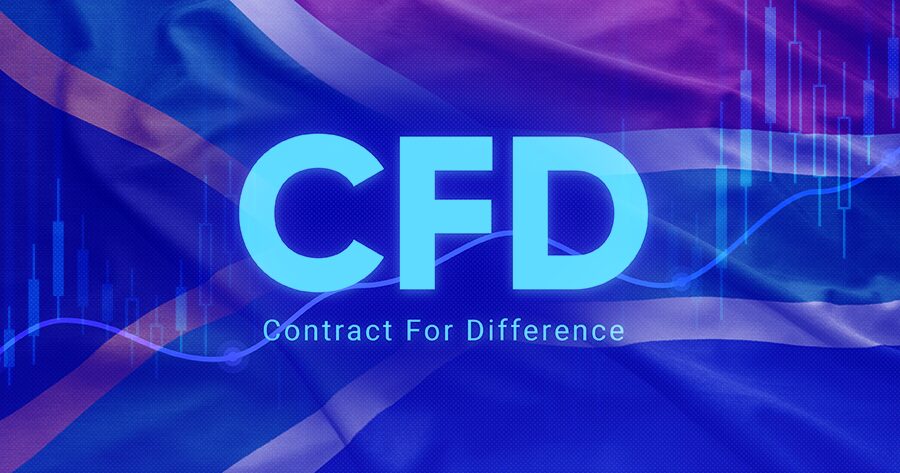The economy of South Africa is an intriguing blend of varied businesses and abundant resources, with commodities significantly influencing its structure. South Africa’s abundant natural resources, which range from valuable industrial metals like iron ore to shimmering gold and platinum, have long been the engine of the country’s economy.
There are many fascinating stories and significant turning points in the history of commodities trade in South Africa. Because of its wealth of natural resources, South Africa has been a critical actor on the world stage for millennia, according to historical data. Numerous jobs have been generated, international investment has been drawn, and these commodities have propelled economic expansion. By thoroughly understanding this historical data, we may better assess the current situation of South Africa’s commodity markets and predict future trends.
In South Africa, trading economics is about more than just multinational companies and foreign investors — it is about standard users having direct access to market data and opportunities.
This article delves into trading economics in South Africa, examining the importance of commodities and their effects on the daily existence of standard users. We will discuss the primary commodities that propel South Africa’s economy in more detail, examine current market patterns, and talk about the opportunities and difficulties that lie ahead. So, let’s get going and explore the vibrant world of commodities in South Africa together!
South Africa Economic Data
As 2024 approaches, South Africa’s economy faces formidable obstacles arising from electricity and logistics problems. The National Treasury’s 0.8% prediction for real GDP growth in 2023 is anticipated to be missed, with only a 0.3% year-over-year increase in the first three quarters and a 0.2% fall in the third. The rate of structural adjustments to address extreme load shedding will determine future growth. It is more important than ever for advanced users studying these patterns to act quickly and effectively.
Real GDP Growth Projections
Real GDP growth is predicted to reach just 1% in 2024 and 1.4% on average between 2024 and 2026, well below the 4% growth rate for emerging economies predicted by the IMF. In 2023, the third quarter saw a 9.6% year-over-year fall in agriculture. Manufacturing, building, mining, and trade all saw declines due to decreasing commodity prices, poor logistics, and a lack of electricity. These industries’ operational issues are at an all-time high, affecting their overall performance.
Household Consumption and Inflation Trends
In the third quarter, household consumption expenditures decreased by 0.3% yearly due to financial strain caused by higher interest rates, higher inflation, and lower actual earnings. In the fourth quarter, headline inflation averaged 5.5% year over year, even though it had moderated to 5% in the third quarter. The South African Reserve Bank kept the policy rate at 8.25% to contain inflation within the target range of 3% to 6%. Advanced users will get direct access to comprehensive economic data to closely monitor these inflation trends and their effects.
Public Finances and Infrastructure
The state of the public finances deteriorated in 2023, with the gross debt predicted to reach 77.7% of GDP by 2025–2026 and the budget deficit estimated to increase to 4.9%. To promote growth, the government needs to improve the supply of facilities and entice private investment. The electricity and logistics industries require immediate reforms to combat inefficiency and corruption. South Africa faces the prospect of prolonged economic stagnation without prompt changes, which would impede attempts to lower unemployment, poverty, and inequality. Direct access to up-to-date, high-quality data and analytics in real-time is essential for advanced users and politicians to drive the necessary reforms and implement workable solutions.
South Africa Economy Ranking
According to the IMF’s World Economic Outlook released in April, South Africa is set to restore its status as Africa’s largest economy despite persistent supply-side problems in the electricity and logistics sectors.
With a GDP anticipated to reach USD 373 billion, South Africa is expected to overtake Egypt. Egypt earned the top position in 2023 but is expected to drop to USD 348 billion due to currency devaluation.
With a projected GDP of USD 253 billion, Nigeria—which dominated the rankings in 2022 — will likely drop to fourth place, behind Algeria’s USD 267 billion. The government’s recent economic changes have attributed Nigeria’s high inflation rate. Currency depreciation has also been a contributing factor to this change.
In May of last year, the value of the Nigerian naira was 50% lower than the US dollar before President Bola Tinubu’s administration. Recently, there has been a rebound in its value.
Egypt is the second-largest International Monetary Fund (IMF) debtor after Argentina. It is also considered one of the most troubled emerging nations globally. Egypt depreciated its currency by more than 35% to secure additional loans.
API users and Excel add-in capabilities provide advanced users with direct access to real-time data on commodity prices. These prices are currently at all-time highs, enabling users to make informed economic analysis and forecasting decisions.
Trading Economics Commodities South Africa
The commodities market is expected to reach an estimated value of US$1,672.00 billion globally in 2024, with a 1.99% predicted annual growth rate (CAGR 2024-2029). The market is anticipated to reach a total value of US$1,845.00 billion by 2029 on this growth trajectory. In this market, the average price per contract is expected to be US$0.61 in 2024. In terms of global context, the US leads with the most considerable nominal value, estimated to be US$56,690.00 billion in 2024. The Commodities market is projected to involve over 2,830.00 thousand contracts by 2029. This highlights its potential rise and essential role in the global economy.
Economic Impact of Commodities on South Africa
The nature of the market and investor behaviors are significantly changing in South Africa’s commodities market.
Client preferences
Investors in South Africa are increasingly diversifying their holdings. This strategy helps them protect themselves from market volatility. There is a rising demand among these investors for commodity investments. The chance to diversify risk across several asset classes and the possibility of significant gains drive this trend.
Market trends
One noteworthy development in the South African commodities market is the increasing acceptance of trading in commodity derivatives. Derivatives like futures and options are becoming popular among investors, who can speculate on commodity prices without holding actual commodities. Leverage opportunities, simplicity of trading, and the potential to profit from increasing and decreasing prices are the main drivers of this trend.
Foreign Exchange Earnings
South Africa’s economy relies heavily on foreign exchange profits, primarily determined by the country’s exports, especially in the commodities industry. The nation generates a sizable amount of foreign exchange by exporting commodities like gold, platinum, natural gas, iron ore, and agricultural items like wheat and maize. These exports promote the general stability of the economy. They stabilize the balance of payments and add to foreign exchange reserves. However, changes in the global demand and price of commodities may affect South Africa’s foreign exchange earnings; this emphasizes the significance of expanding export markets and improving competitiveness.
Local particular situations
The commodities market in South Africa is greatly influenced by the country’s abundant natural resource base, which includes gold, platinum, diamonds, and natural gas. The mining sector, a significant economic driver, influences commodity pricing and market trading. Furthermore, the nation’s advantageous position as a gateway to African markets strengthens its standing in the global commodities trade.
Macroeconomic elements at play
The state of the world economy and commodity prices significantly impact how well the South African commodities market performs. Exchange rates, inflation, and geopolitical developments are a few factors affecting the market pricing of commodities. Furthermore, infrastructural development significantly impacts the general expansion and stability of South Africa’s commodities market. Regulatory frameworks and governmental policies also play a crucial role in shaping market dynamics.
Employment and Job Creation
The commodities industry is vital to employment and job development in South Africa. It generates income at every level of production and distribution across various sectors. Due to its labor-intensive nature, the industry provides a wide range of opportunities. These opportunities span from skilled mining operations to manufacturing employment and agricultural workforce. As a result, the industry directly supports rural development and local communities. In addition to raising household incomes, a rise in jobs in these industries promotes social cohesion and overall economic stability.
Challenges Facing the Commodity Sector in South Africa
Market Volatility and Price Fluctuations
South Africa’s commodity industry faces unstable market circumstances. These include price swings brought on by global supply and demand dynamics, as well as geopolitical issues. These variations can cause income and investment returns to fluctuate. This volatility can be problematic for the stability and expansion of the economy.
Environmental and Sustainability Issues
The mining industry in South Africa faces significant obstacles due to environmental concerns. Activities impact nearby ecosystems and water supplies; thus, strict rules and sustainable practices are required to reduce environmental harm and balance commercial interests.
Infrastructure and Logistics Constraints
Due to insufficient port and transportation facilities, South Africa’s commodity industry suffers operating challenges. These shortcomings impede export competitiveness and effective supply chain management, necessitating significant investments in infrastructure development for industry resilience.
Political and Regulatory Uncertainties
The commodity sector in South Africa is becoming more difficult due to political and regulatory concerns. Operations continuity can be disrupted, and policy changes and governance problems can weaken investor confidence. Clear and stable regulatory frameworks are essential to promote a good business climate and draw in sustainable investment.
Conclusion
In conclusion, a compelling narrative of resiliency, opportunity, and strategic significance emerges from the world of economic commodities trading in South Africa. We have seen throughout this article how South Africa’s diverse range of commodities continues to influence its economic development. South Africa can maintain its reputation as a cornerstone of trading economics Africa and a model of economic resilience for many years by wisely utilizing its natural resources and promoting inclusive growth.








